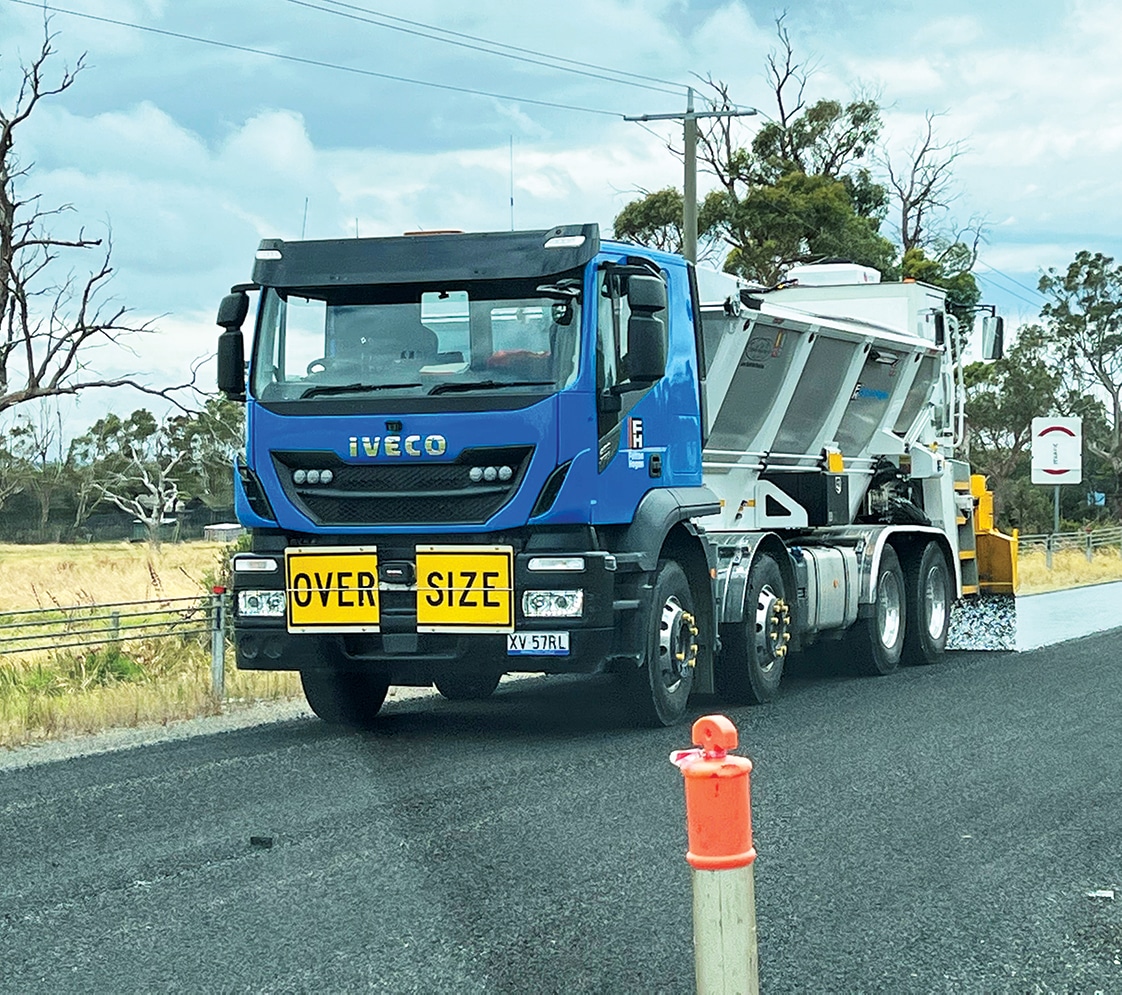
Quality Fabrication and Engineering has introduced a dual control forward moving aggregate spreader for Australian road construction.
Specialising in innovative solutions for plant and equipment for Australia’s road construction, Quality Fabrication and Engineering (Q-FE) has developed a reputation as a provider of robust and high-quality products.
The company’s motto, ‘Producing innovative machinery solutions through collaboration’ reflects its success in delivering specialised designs for trucks and machinery.
Such collaboration has also led to the development of the Road Ant, a dual control forward moving aggregate spreader that can be driven from either end.
As David Lockwood, Q-FE’s Head of Sales explains, the introduction of state legislation in Victoria necessitated the creation of Road Ant.
“Five years ago, the Victorian Government proposed a mandate which required all vehicles that discharge aggregate to become forward moving. As such, the Victorian Government brought in a five-year plan to introduce forward moving aggregate spreaders, effective from 1 July 2022,” Lockwood says.
The amendment to VicRoads Standard 408 clause 408.11 meant the industry needed to find a suitable solution for spreading aggregates that could be designed, approved, and implemented within five years.
Luckily, Q-FE General Manager and co-creator of the Road Ant Glenn Hardiman had already thought of a possible solution. He says the idea was sparked during an inconspicuous discussion with the owner of a large spray seal company.
“In 2005, I was talking with the company owner, he was a relatively new player at the time, although had extensive prior experience working with and managing other spray seal crews. We were discussing machinery in general when he expressed his concerns about the risks of reversing while operating on site. It was here that we talked about potential solutions.
“When the mandate was mentioned, Q-FE jumped at the opportunity to develop an Australian designed and manufactured product.”

Road Ant’s features
The Road Ant can be driven independently from both the rear and front ends of the vehicle and has been fitted to a range of cab chassis to date, including Iveco, Isuzu and Daf. With the knowledge gained in varying fit outs, Q-FE are confident they can integrate controlling a wide range of truck makes.
Additionally, it is fitted with a Trout River asphalt-compatible body and Trout River automated 10-gate chip spreader, a proven product widely used by most companies nationally according to Hardiman.
The aggregate is conveyed from the moving floor body, passing under the cabin through a custom built Trout River conveyor attachment and into the chip spreader, allowing the use of one single belt for longevity and minimal maintenance.
In sprayed sealing applications where work needs to be done in reverse, the Road Ant can be operated from the rear cabin instead of the front cabin, allowing the operator to work in forward motion, with the ability to “spot up or dust off” from the conventional cabin when heading back over freshly sealed work.
“This is a very versatile machine. Unlike other purpose-built spreaders which can only be used for one application, the Road Ant can be used for spray sealing when required or conventionally for transporting material or to feed an asphalt paver,” Hardiman says.
“We can also fit different attachments to the Road Ant, by simply removing the chip spreader and installing a side conveyor or shouldering attachment, the unit can be used for many different purposes.”
Keeping safe
Hardiman says a significant focus during the development of the Road Ant was on making the machine safe and simple for operators. As a result, operating cameras and monitoring screens were fitted to the Road Ant and the truck cabin.
“We have tried to address many of the concerns raised by operators by collaborating with the industry,” he says. “There has been a lot of energy and time invested communicating with the industry to understand and develop a machine which is functional, a machine that does the job with a minimum of fuss.”
The Road Ant’s new control system allows the operator to quickly monitor the spreader’s speed rate, status and cover rate at a glance, which allows the operator to focus on worksite and obstacles without distractions of complicated controls.
As the July 2022 mandate deadline approaches and with numerous sales and repeat orders already under its belt, Q-FE is currently fielding enquiries from local and national road construction operators who want to fill out their aggregate spreader fleet needs in the coming years.
“It’s an exciting time for Q-FE and we are very proud to be adding a safe, practical and flexible aggregate spreader to the industry,” Hardiman says.
This article was originally published in the May edition of our magazine. To read the magazine, click here.
Related stories:
- Collaboration creates innovation with Quality Fabrication and Engineering
- Rolling out the Road Ant
- Moving forward into spray sealing season with Q-FE


